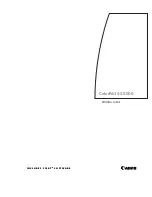
Checkout procedure
This section provides additional information for you to diagnose a problem.
Precautions before performing the checkout procedure
Before you perform the checkout procedure for diagnosing hardware problems, review the following
information.
• Read the safety information. See “Safety” on page v.
• Dynamic System Analysis (DSA) provides the primary methods of testing the major components of the
server, such as the system board, Ethernet controller, keyboard, mouse (pointing device), serial ports,
and hard disk drives. You can also use DSA to test some external devices. If you are not sure whether a
problem is caused by the hardware or by the software, you can use DSA to confirm that the hardware is
working properly.
• When you run DSA, a single problem might cause more than one error message. When this happens,
correct the cause of the first error message. The other error messages usually will not occur the next
time you run DSA.
Important:
If multiple error codes or light path diagnostics LEDs indicate a microprocessor error, the error
might be related to the microprocessor or the microprocessor socket.
• Before you run DSA, you must determine whether the failing server is part of a shared hard disk drive
cluster (two or more servers sharing external storage devices). If it is part of a cluster, you can run all
diagnostic programs except the ones that test the storage unit (that is, a hard disk drive in the storage
unit) or the storage adapter that is attached to the storage unit. The failing server might be part of a
cluster if any of the following conditions is true:
– You have identified the failing server as part of a cluster (two or more servers sharing external storage
devices).
– One or more external storage units are attached to the failing server and at least one of the attached
storage units is also attached to another server or unidentifiable device.
– One or more servers are located near the failing server.
Important:
If the server is part of a shared HDD cluster, run one test at a time. Do not run any suite of
tests, such as “quick” or “normal” tests, because this might enable the hard disk drive diagnostic tests.
• If the server is halted and a POST error code is displayed, see Appendix B “UEFI (POST) error codes” on
page 491. If the server is halted and no error message is displayed, see “Troubleshooting by symptom”
on page 61 and “Solving undetermined problems” on page 72.
• For information about power-supply problems, see “Solving power problems” on page 71, “Power
problems” on page 69, and “Power-supply LEDs” on page 54.
• For intermittent problems, check the event log; see “Event logs” on page 56 and Appendix C “DSA
diagnostic test results” on page 503.
Performing the checkout procedure
To perform the checkout procedure, do the following:
Step 1.
Is the server part of a cluster?
•
No:
Go to Step 2 on page 50.
•
Yes:
Shut down all failing servers that are related to the cluster. Go to Step 3 on page 51.
Step 2.
Do the following:
50
Lenovo System x3250 M6 Installation and Service Guide
Summary of Contents for x3250 m6
Page 1: ...Lenovo System x3250 M6 Installation and Service Guide Machine Types 3633 and 3943 ...
Page 6: ...iv Lenovo System x3250 M6 Installation and Service Guide ...
Page 18: ...4 Lenovo System x3250 M6 Installation and Service Guide ...
Page 60: ...46 Lenovo System x3250 M6 Installation and Service Guide ...
Page 100: ...86 Lenovo System x3250 M6 Installation and Service Guide ...
Page 516: ...502 Lenovo System x3250 M6 Installation and Service Guide ...
Page 678: ...664 Lenovo System x3250 M6 Installation and Service Guide ...
Page 685: ...Taiwan Class A compliance statement Appendix E Notices 671 ...
Page 695: ......
Page 696: ......
















































